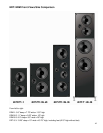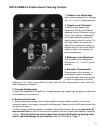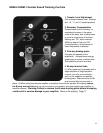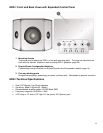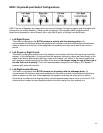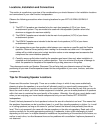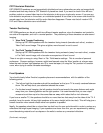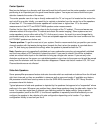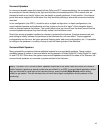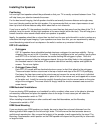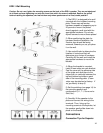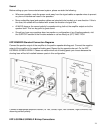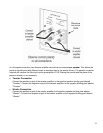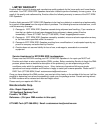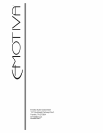
18
Surround Speakers
In a surround speaker setup that closely follows Dolby and DTS recommendations, the surrounds should
be mounted on the wall directly to the right and left sides of the seated position OR on stands that are
elevated at least to ear height. Higher than ear height is actually preferred. In that position, if the listener
points their arms straight out to the sides, then they would be pointing to where the surrounds should be
mounted.
In this configuration (the ERD-1) should be set in a dipole configuration. In dipole configurations, the
sound radiates forwards and backwards and has a quiet null zone (the "apex" of the triangular shape)
which is directed towards the listener. The overall effect is that you cannot hear the direct sound from the
surround speakers because they don't directly radiate into the listener's axis.
Should the surround speaker locations be chosen to be behind the listeners, Emotiva recommends a bi-
pole setting to initially evaluate the performance but eliminate the null zone effect. These suggested
configurations are the norm, but given personal listening taste, odd room configurations, etc., it is possible
to configure the speakers in a variety of ways to suit the listening taste of the individual.
Surround Back Speakers
Many preamplifier processors feature additional outputs for surround back speakers. These create a
wonderful sense of realism in surround effects during playback of Dolby Digital EX, Dolby Digital Pro Logic
IIx and DTS-ES. Often when the system has surround speakers mounted to the sides of the listeners, the
surround back speakers are mounted or positioned behind the listeners.
Ideally, "Surround" and "Surround Back" speakers should be of the same make and model, and fitted at
similar heights to produce a smooth continuous sound field. In an ERD-1 surround back application where
they are mounted to a wall behind the listeners though, select the Left /Right Bi-pole switch setting
initially to get started. This will eliminate the null zone that a dipole configuration would produce in that
positioning.



